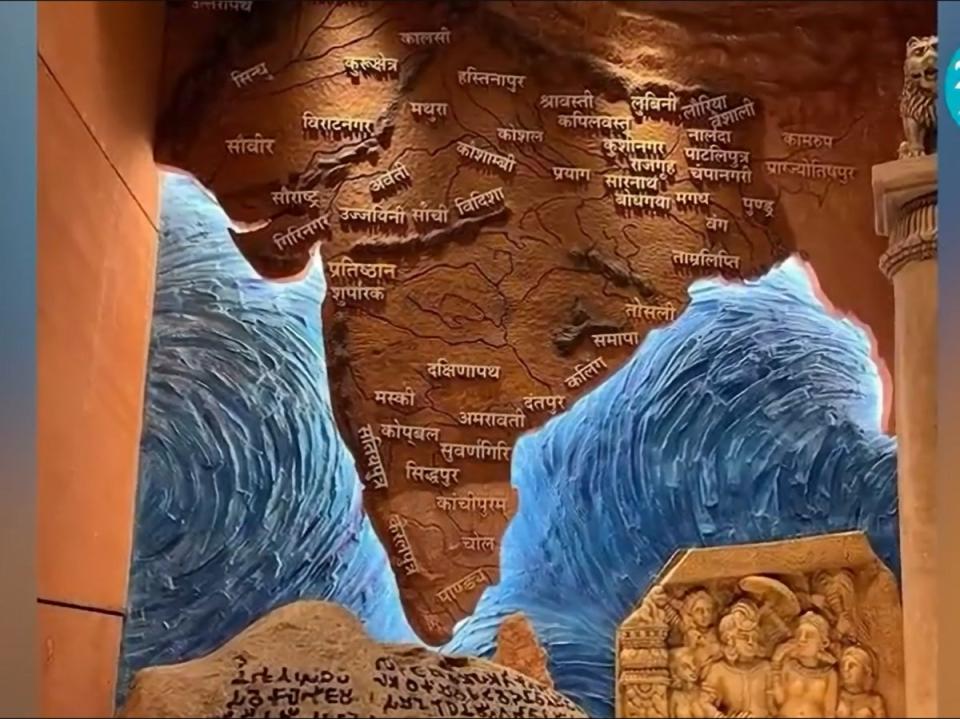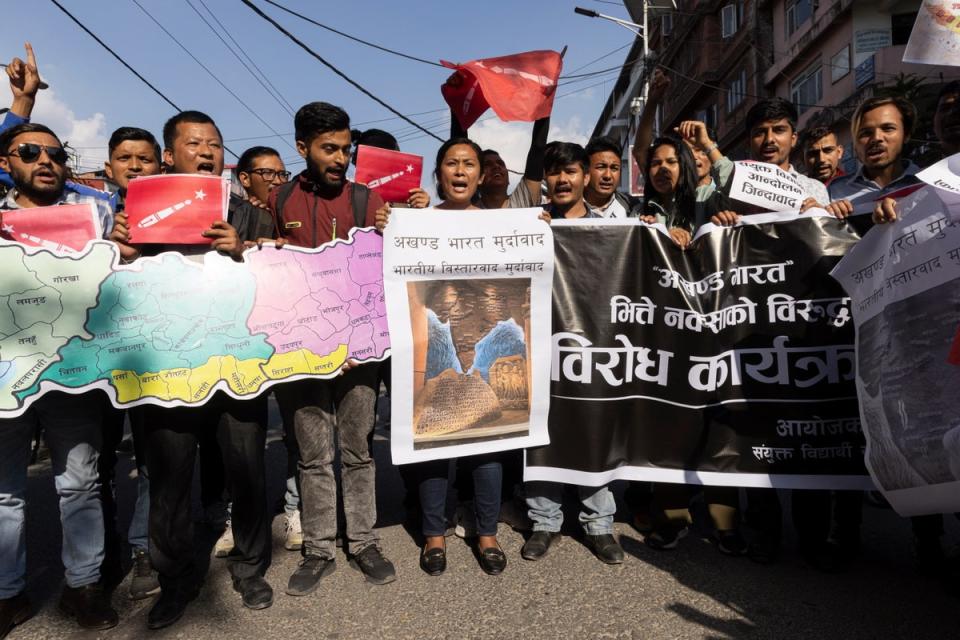Mural of ‘undivided India’ in India’s new parliament building sparks diplomatic row

A mural depicting a map of an ancient “undivided India” in the country’s new parliament has angered neighbours including Bangladesh, Nepal and Pakistan.
The artwork shows India extending into nearby nations including Afghanistan in the west, the Maldives, Sri Lanka and Bhutan.
The concept of a ‘Greater India’ – popularly called ‘Akhand Bharat’ in Hindi – is espoused by hardline nationalists.
Bangladesh ordered its diplomats in Delhi to seek a clarification and explanation of the mural, while there were protests in Nepal.
Prime minister Narendra Modi inaugurated the new parliament buidling, constructed at an estimated cost of Rs 9.7bn (£94.2m), late last month.
India said the mural shows the ancient Mauryan empire and that it represents a time of flourishing “people-oriented” governance, and has “nothing to do with politics”.
That statement came after a minister in Modi’s government tweeted a photo of the mural. “Resolve is clear – Akhand Bharat,” wrote parliamentary affairs minister Pralhad Joshi.
ಸಂಕಲ್ಪ ಸ್ಪಷ್ಟವಾಗಿದೆ - ಅಖಂಡ ಭಾರತ 🇮🇳#NewParliamentBuilding#MyParliamentMyPride pic.twitter.com/tkVtu3CCoh
— Pralhad Joshi (@JoshiPralhad) May 28, 2023
Bangladesh’s minister of state for foreign affairs Shahriar Alam said his ministry directed its mission in Delhi to seek “further clarification” on the matter.
The minister suggested the Bangladesh government has no objection to the mural after Delhi’s clarification, but is seeking an explanation amid pressure from opposition parties.
“There is widespread anger over the map,” Mr Alam said.
“There is no reason to express doubts about it. However, for further clarification, we have asked the mission in Delhi to speak to the Indian Ministry of External Affairs to find out what their official explanation is,” he said.
Bangladesh’s principal opposition party, the Bangladesh Nationalist Party (BNP), had raised the issue of the mural.
“Displaying Bangladesh as part of the undivided map of any other country is a threat to the country’s independence and sovereignty,” said the BNP’s general secretary Mirza Fakhrul Islam Alamgir on Sunday.
Pakistan’s foreign ministry spokesperson Mumtaz Baloch also raised concerns over the mural and said Islamabad was “appalled” by Mr Joshi’s comments.
“The gratuitous assertion of ‘Akhand Bharat’ is a manifestation of a revisionist and expansionist mindset that seeks to subjugate the identity and culture of not only India’s neighbouring countries but also its own religious minorities,” she said.
The mural also sparked protests in Nepal in the beginning of this month when Mr Modi was on a visit to that country, and criticism from the country’s political leaders.

“A country like India which sees itself as an ancient and established country and as a model of democracy keeps Nepali areas in its map and hangs the map in the parliament, this cannot be considered appropriate,” said Nepal’s former prime minister KP Sharma Oli.
India’s ministry of external affairs (MEA) said in a statement on 2 June that the mural showed a time in Indian history during King Ashoka’s rule.
Ashoka was one of the ancient Mauryan dynasty’s most charismatic rulers who played a significant role in propagating Buddhism in Asia.
“The mural in question depicts the spread of the Ashokan empire and the idea of a responsible and people-oriented government he adopted and propagated. That’s what the plaque in front of the mural says,” MEA spokesperson Arindam Bagchi said.
The concept of an undivided India, however, has often been referenced by the Rashtriya Swayamsevak Sangh (RSS), the powerful ideological parent of the ruling Bhartiya Janata Party (BJP).
Similar maps are reportedly displayed in the offices of some of its more prominent leaders.

 Yahoo Sport
Yahoo Sport 





































